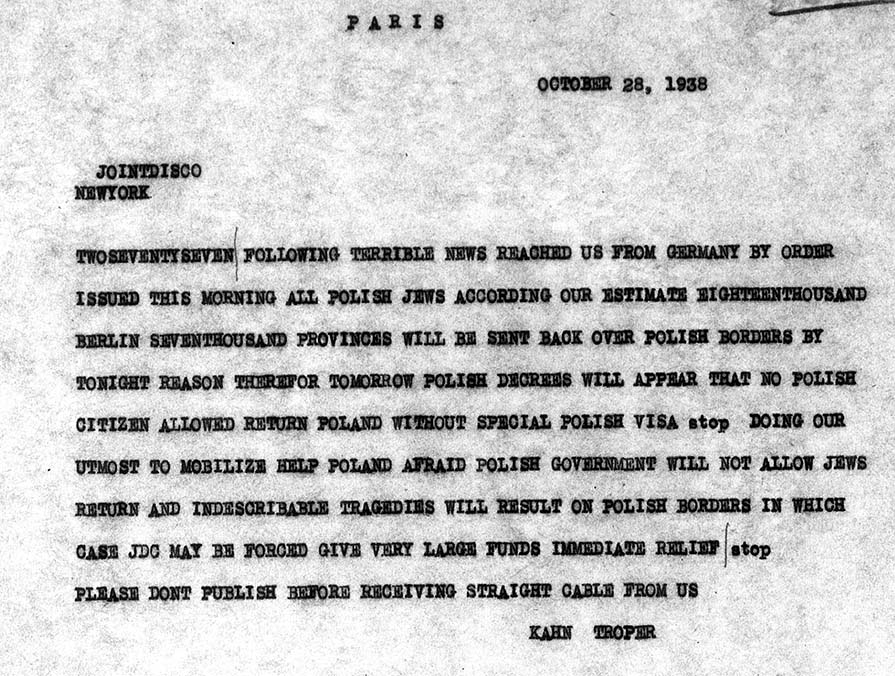
JDC Archives Shares Zbąszyń Refugees List with JRI-Poland
JDC aided Jews forced out of Germany in 1938
In its continuing collaboration with JRI-Poland, the JDC Archives is pleased to announce that it has recently shared the data from its list of Jewish Refugees in Polish Border Areas, 1938-1939. This 120-page list, found in the JDC New York Headquarters Collection, 1933-1944, contains highly detailed information on Polish Jews living in Germany who were expelled by the Nazi government during the night of October 27-28, 1938, and forced across the border, most to the town of Zbąszyń (Ger., Bentschen). The personal details include date and place of birth, current address in Zbąszyń, and, most significant to the effort to provide assistance and support for the refugees, the names and addresses of overseas relatives.
In a move that foreshadowed the Nazis’ later transport of Jews to concentration camps, the Jews were given no advance warning and were not allowed to take possessions with them. Of the roughly 16,000 Polish Jews expelled, about one-half arrived in Zbąszyń and some 5,500 were detained there. In the first few weeks, many of those expelled were able to continue on into the interior of Poland to rejoin relatives, but a Polish government order blocked this, creating a crisis.
The small Jewish community of Zbąszyń was quickly overwhelmed by the need to house and feed the refugees and turned to national Jewish organizations and the Warsaw office of the JDC for assistance. JDC sent a team of representatives to the area, notably led by Emanuel Ringelblum, who had begun working for JDC in 1930. In a letter written on December 6, 1939, Ringelblum described the period he spent in Zbąszyń working with the refugees:
In five weeks we put up a whole town, with a supply department, hospital, workshops for carpenters, tailors, shoemakers and barbers, a legal section, an emigration office, our own post office (with fifty-three clerks), a welfare department, a court of arbitration, a committee for law and order, a control service (both overt and covert), a sanitary commission, a network of health services.
In addition to the lists, the names from which are included in the JDC Archives Names Index, the JDC Archives Text Collection contains correspondence, newspaper clippings, and other documents related to this event, including an eyewitness account dated November 18, 1938, just three weeks after the expulsion; a summary report on JDC’s response by Morris Troper from the following March; and this cable from Troper to JDC Headquarters in New York on the very day of the expulsion, stating his fear that “indescribable tragedies will result”:
JDC Archives, New York Office Collection, 1933-1944, Folder #878, Cable from Bernard Kahn and Morris Troper to JDC Headquarters, October 28, 1938; https://search.archives.jdc.org, item 509840.
The list, which contains the names of about 2,200 of the refugees and 1,600 overseas relatives, is divided into sections, with later portions organized by town of birth or of family origin. Although many of the refugees no longer had close family ties in Poland, after the Zbąszyń camp was closed several months later, they headed to ancestral homes seeking safe haven.
Browse the Lists in the Names Index and search our Names Index!




